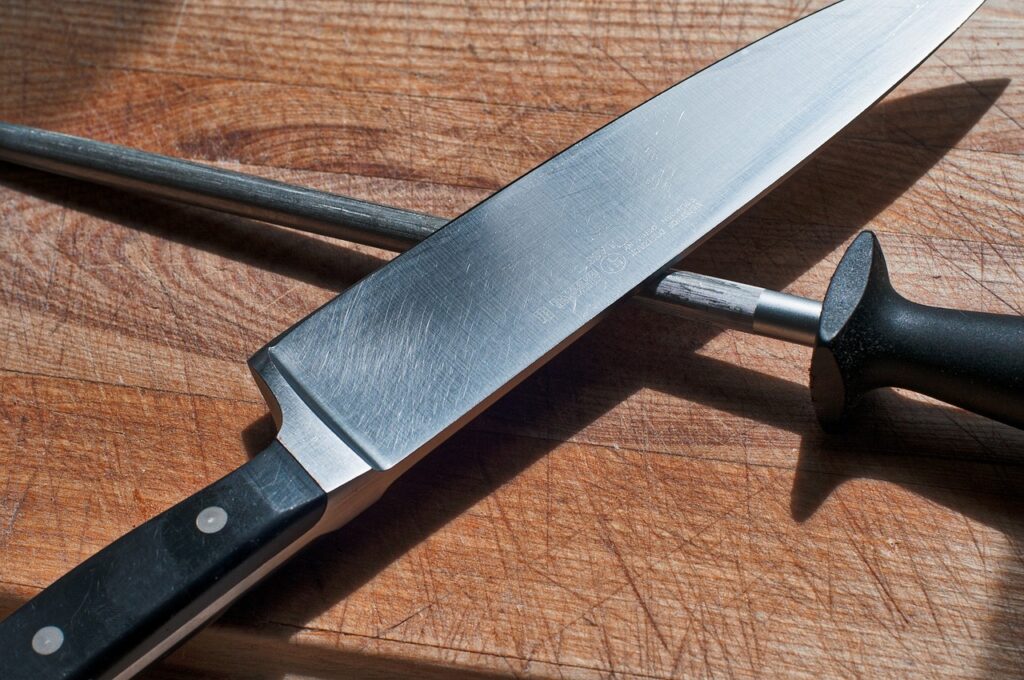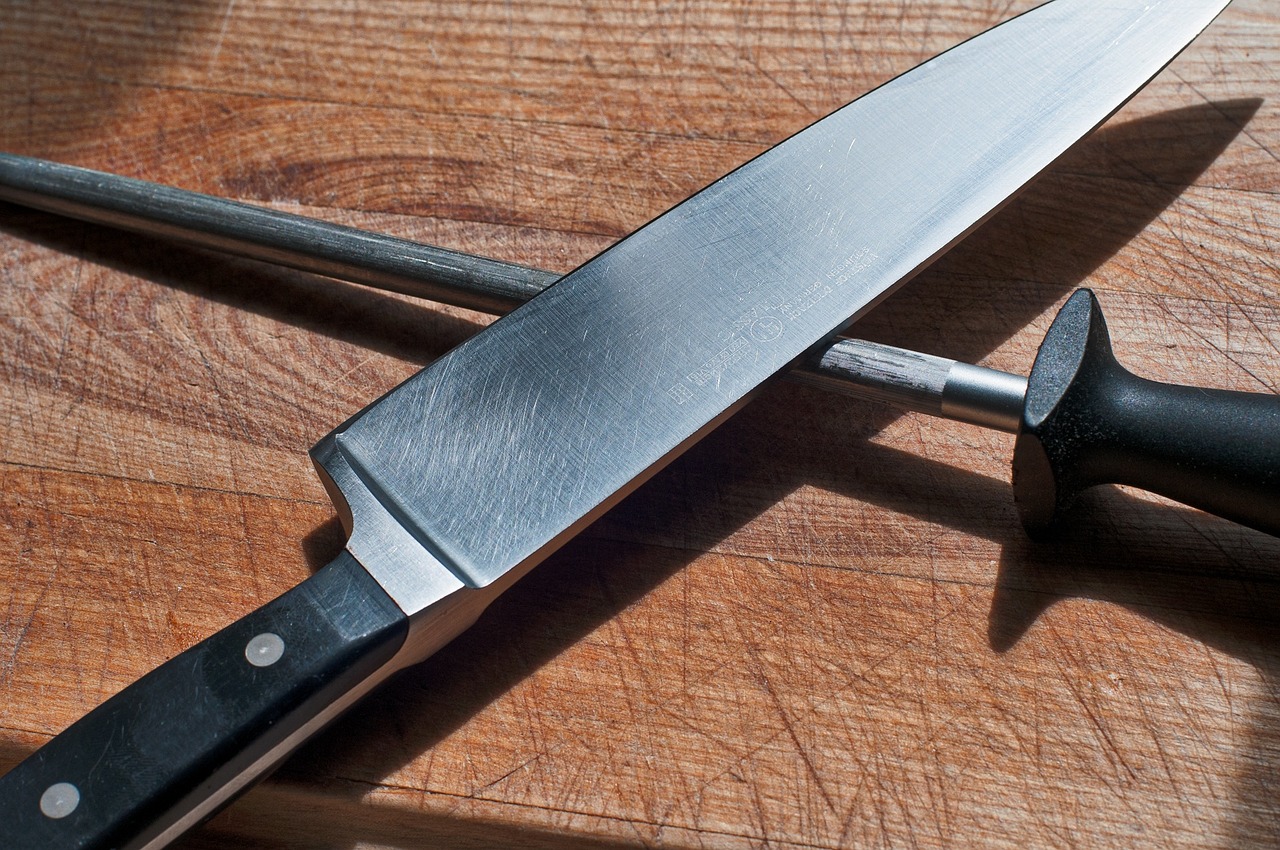When it comes to culinary adventures, a reliable and efficient kitchen knife is a chef’s best friend. In this article, we will delve into the composition of kitchen knives, exploring the materials they are made of, their uses, and the various types available. From the versatility of a paring knife to the durability of knife handles, we’ll uncover the secrets behind these essential tools.

Contents
Understanding the Materials Of Kitchen Knives:
Kitchen knives are crafted using a variety of materials, each with its own unique properties. Let’s explore some common materials used in their construction.
Stainless Steel:
Stainless steel is a popular choice for kitchen knives due to its durability, corrosion resistance, and ease of maintenance. It retains its sharpness well and is suitable for a wide range of kitchen tasks, from slicing and dicing to chopping and mincing.
Carbon Steel:
Known for its exceptional sharpness and edge retention, carbon steel knives are favored by professional chefs. They require regular maintenance to prevent rusting but offer excellent cutting performance and precision.
Ceramic:
Ceramic knives are highly resistant to corrosion and do not impart any metallic taste to food. They retain their sharpness for a long time but can be more brittle and prone to chipping, requiring careful handling.
High-Carbon Stainless Steel:
Combining the best of both worlds, high-carbon stainless steel knives offer the durability and corrosion resistance of stainless steel with the superior sharpness and edge retention of carbon steel.
Exploring Kitchen Knives Handles:
Knife handles play a crucial role in comfort, grip, and overall knife performance. They are crafted from various materials, including:
- Wood:
Wooden handles provide a warm and natural grip, offering a traditional and aesthetic appeal. Common woods used include walnut, rosewood, and ebony, offering both durability and beauty. - Plastic:
Plastic handles are lightweight, durable, and easy to maintain. They come in various colors and designs, providing a comfortable grip for extended periods of use. - Composite:
Composite handles combine different materials, such as wood and plastic, to offer a balance of aesthetics, durability, and grip. These handles often feature layered designs for enhanced strength and stability.
Find more about knives parts in our detailed guide.
Kitchen Knives Uses and Types:
Kitchen knives come in a wide array of shapes and sizes, each designed for specific tasks. Let’s explore some popular types and their uses:
- Paring Knife:
Paring knives are small, versatile knives used for intricate tasks like peeling, trimming, and detailed cutting. They excel in precision work and offer excellent control. - Chef Knife:
A chef knife, also known as a cook’s knife, is a versatile, all-purpose knife ideal for chopping, slicing, and dicing various ingredients. It is a staple in every kitchen and offers efficiency and versatility. - Combat Knife:
Combat knives are designed for military or self-defense purposes. They are typically robust, durable, and feature a fixed blade, suitable for tactical applications.
Understanding the composition and materials of kitchen knives is essential for selecting the right tool for your culinary adventures. Whether you prefer stainless steel, carbon steel, or ceramic, each material offers its own unique benefits. Likewise, considering the handle material and type is crucial for comfort and grip. With the right knowledge of knife composition, you can elevate your cooking skills and enjoy the precision and efficiency that these essential tools bring to the culinary world.

